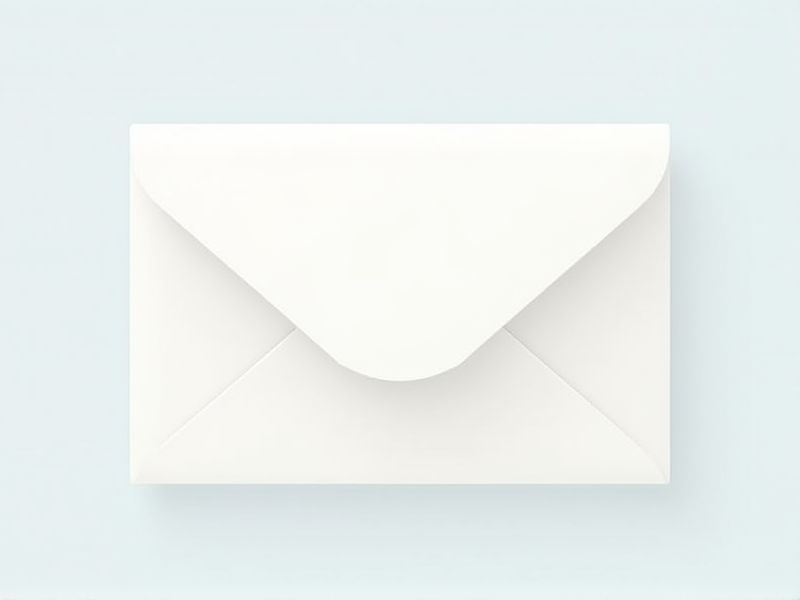
The standard business envelope size in the United States is referred to as a #10 envelope. A #10 envelope measures 4 1/8 inches by 9 1/2 inches (104.8 mm x 241.3 mm). This size comfortably fits an 8 1/2" x 11" sheet of paper, folded in thirds, making it ideal for mailing letters, invoices, or statements. Choosing the right envelope size helps ensure your documents arrive neatly and professionally.
Size Specifications
The standard business envelope size, commonly referred to as #10, measures 4.125 x 9.5 inches, making it ideal for containing standard 8.5 x 11-inch documents folded into thirds. This size is widely used for mailing letters and invoices, ensuring compatibility with most printers and stationery. Another popular option is the 9 x 12 inch envelope, used for larger documents that need to remain flat without folding. When selecting an envelope, consider both size and durability, as heavy-duty options can provide additional protection for your important correspondence.
Envelope Types
Business envelopes come in various types, each designed for specific purposes and sizes. The most common type is the #10 envelope, measuring 4.125 x 9.5 inches, ideal for standard letter-sized documents. Another popular option is the window envelope, allowing visibility of the recipient's address, which streamlines mail handling and reduces the need for labels. For bulk mailing, the large 9 x 12 inch envelope can accommodate brochures or reports, making it a versatile choice for businesses aiming to enhance their communication strategy.
Material Quality
The standard quality of a business envelope typically revolves around paper weight, with the most common being 24 lb to 28 lb for durability and a professional appearance. You should consider using envelopes made from 100% recycled or FSC-certified materials, which not only showcase environmental responsibility but also enhance brand reputation. Security features, such as tamper-evident seals or opaque lining, can protect sensitive information and improve client trust. Lastly, size matters, with the popular #10 envelope measuring 4.125 x 9.5 inches, ideally accommodating standard 8.5 x 11-inch documents folded into thirds.
Window Envelopes
Window envelopes, commonly used in business communication, feature a transparent plastic film that allows the recipient's address to show through from an inserted document. These envelopes are typically made from 24-28 pound paper, offering durability while maintaining a professional appearance. Standard dimensions for window envelopes include the #10 size, measuring 4 1/8 x 9 1/2 inches, ideal for letter-sized documents folded into thirds. When designing your mailings, consider a window placement of 1 inch from the left and 2 inches from the bottom, ensuring optimal visibility for addresses.
Flap Design
The flap design of a standard business envelope significantly influences its functionality and aesthetics. Typically featuring a pointed or square flap, these designs ensure secure closure while maintaining an elegant appearance. A pointed flap is often preferred for formal correspondence, while a square flap can offer a modern touch, catering to various business preferences. Choosing the right flap can enhance your brand image, as the envelope is often the first physical interaction clients have with your business materials.
Closure Methods
Business envelopes typically utilize three main closure methods: adhesive, gummed, and self-seal. Adhesive closures feature a peel-and-stick design that ensures quick, tamper-proof sealing with a simple press. Gummed envelopes require moisture to activate the adhesive, often providing a more traditional aesthetic but necessitating a bit more time for sealing. The self-seal option, which consists of a double-sided adhesive strip, combines efficiency with convenience, allowing you to secure your documents with minimal effort while maintaining a professional appearance.
Print Compatibility
Business envelopes are typically designed to meet the standard dimensions of 4.125 x 9.5 inches for #10 envelopes, ensuring print compatibility with most office printers. The paper weight usually ranges between 24 to 28 pounds, providing durability while allowing for high-quality printing. Most envelopes are constructed from white or manila colors, which offer excellent contrast for both text and logos, enhancing readability. When selecting envelopes for your correspondence, consider options with security tints or self-sealing mechanisms to elevate professionalism and confidentiality.
Branding Potential
A standard business envelope offers a canvas for branding, typically measuring 9.5 x 4.125 inches. Incorporating your company logo and colors can enhance brand recognition, with studies showing that consistent branding can increase revenue by up to 23%. Custom designs on envelopes can improve open rates by creating a visually appealing first impression, influencing recipient engagement. Utilizing high-quality materials, such as 24 lb. paper or eco-friendly options, not only reflects professionalism but also aligns with current sustainability trends.
Cost Considerations
When selecting business envelopes, cost considerations play a crucial role in maximizing budget efficiency. Typically, a standard business envelope measures 4.125 x 9.5 inches, allowing for easy insertion of standard-sized documents without excess material waste. Bulk purchasing can result in significant savings, with prices averaging between $0.05 to $0.15 per envelope depending on the quantity ordered. By evaluating your mailing needs and opt for cost-effective options, you can reduce overhead while ensuring your correspondence maintains a professional appearance.
Environmental Impact
Business envelopes can have a significant environmental impact, with estimates suggesting that around 100 billion envelopes are used annually in the United States alone. Choosing eco-friendly materials, such as recycled paper or sustainable sources, can reduce deforestation and conserve resources. Moreover, using vegetable-based inks instead of petroleum-based options minimizes toxic waste and encourages a healthier printing process. By opting for envelopes made from these sustainable materials, you can lower your carbon footprint and contribute to a more eco-conscious business model.
